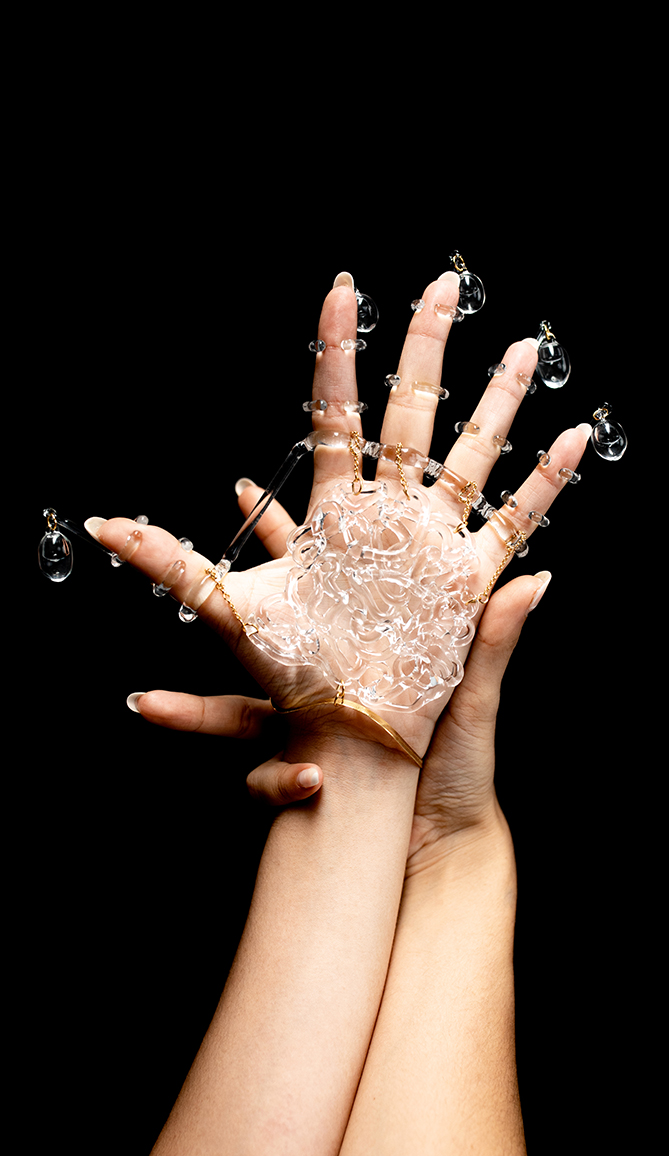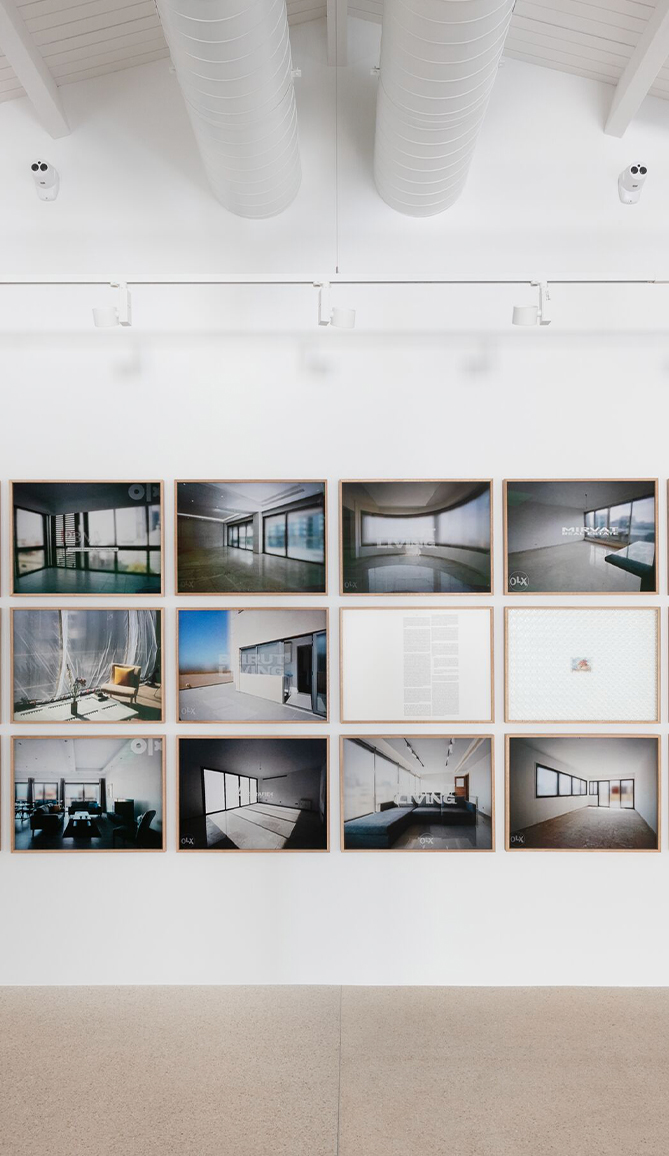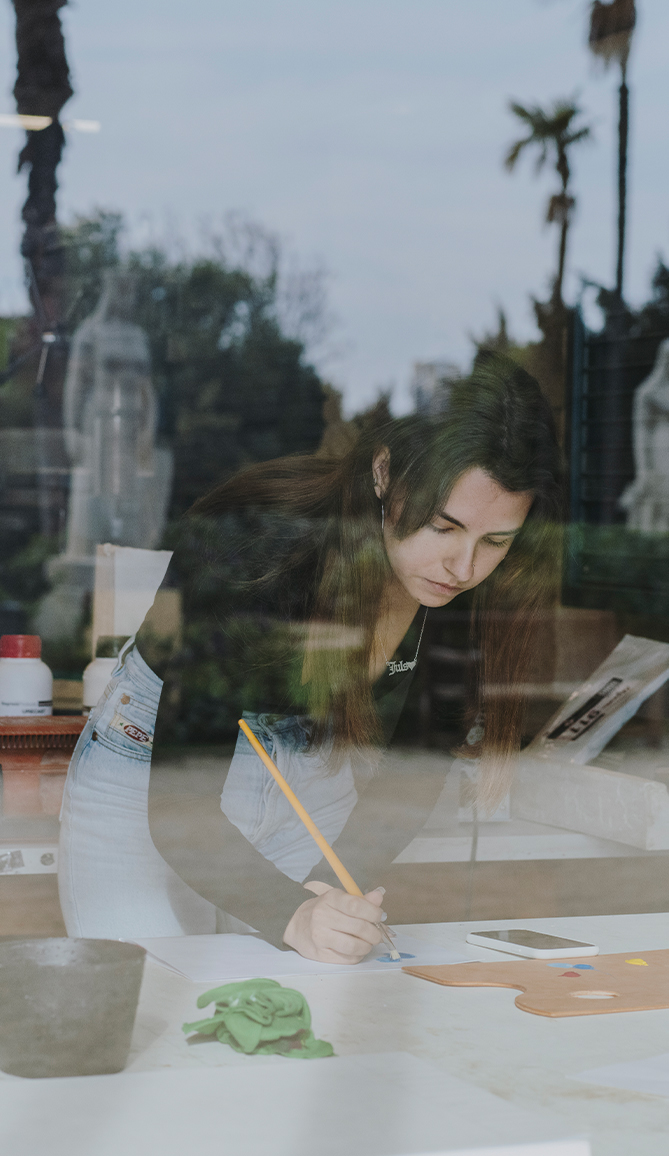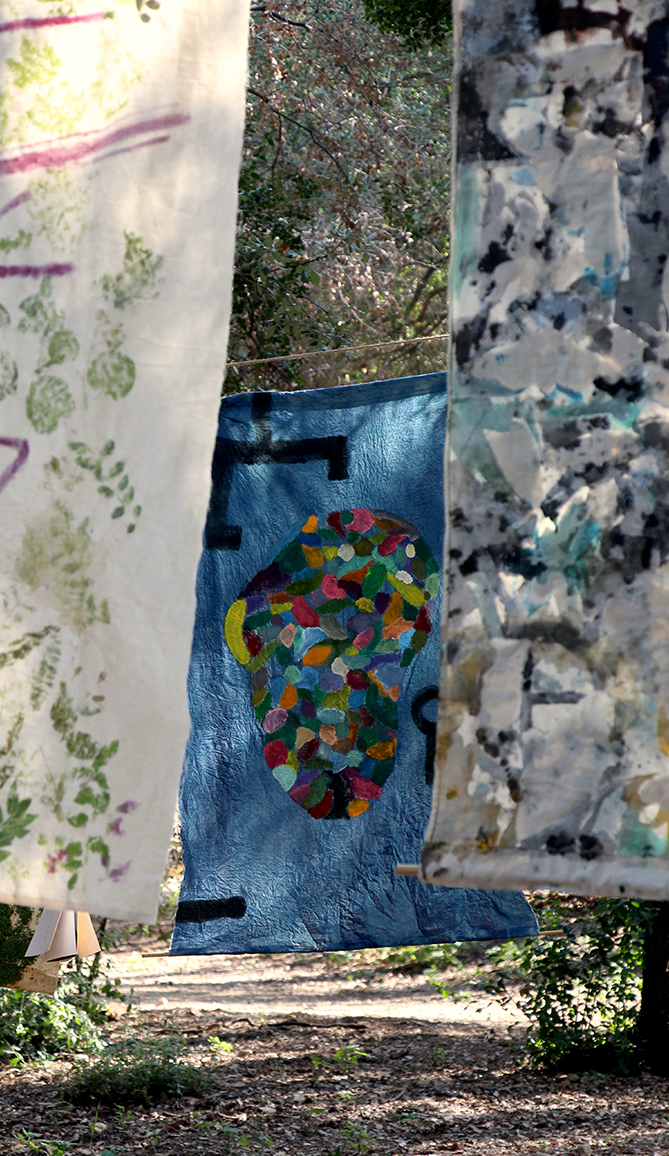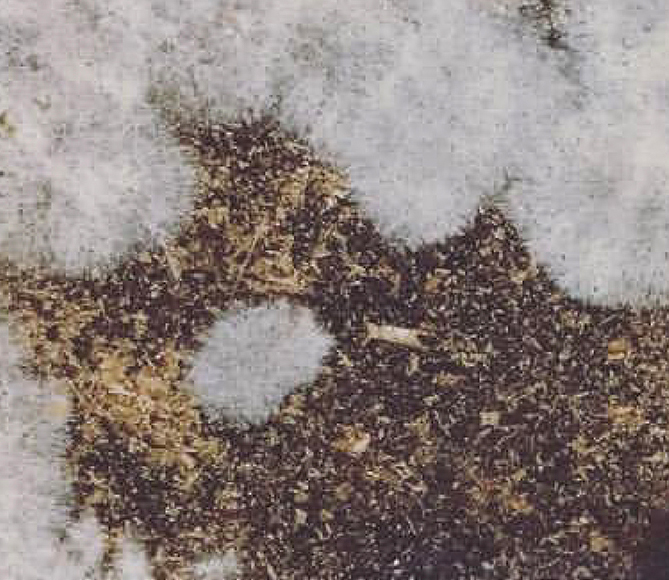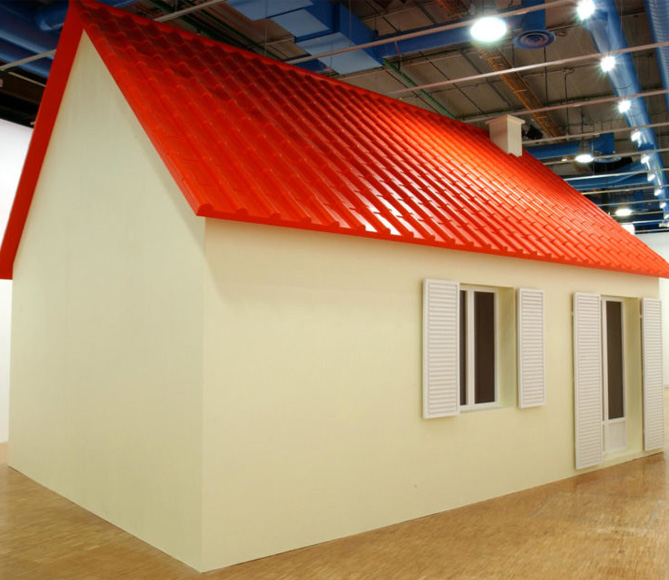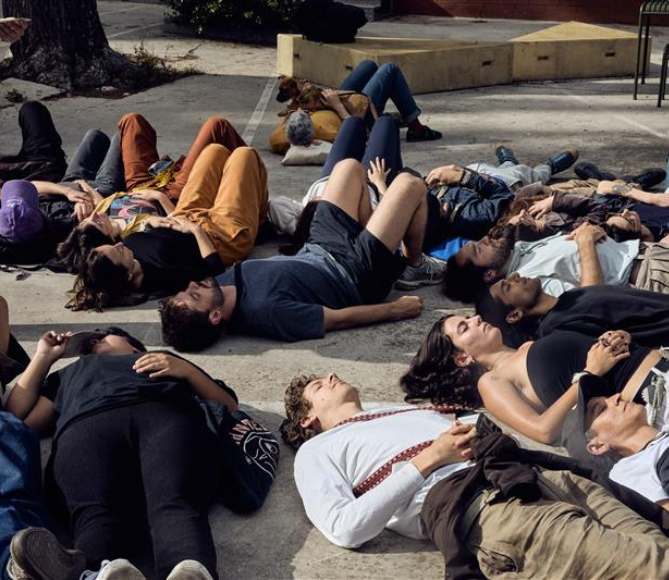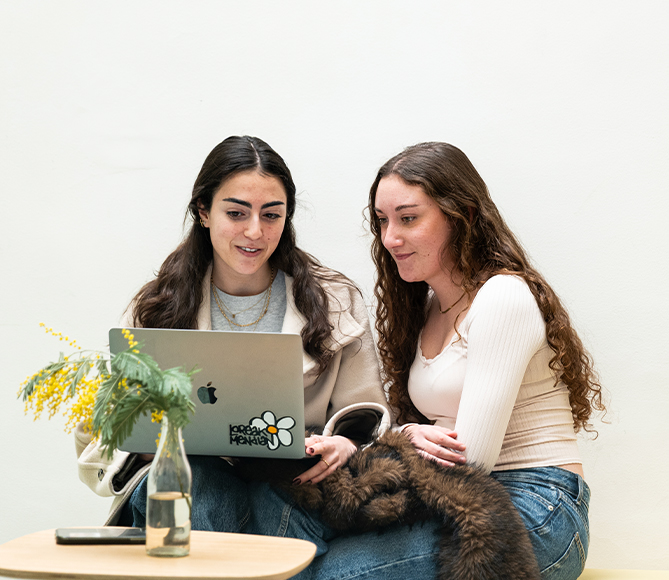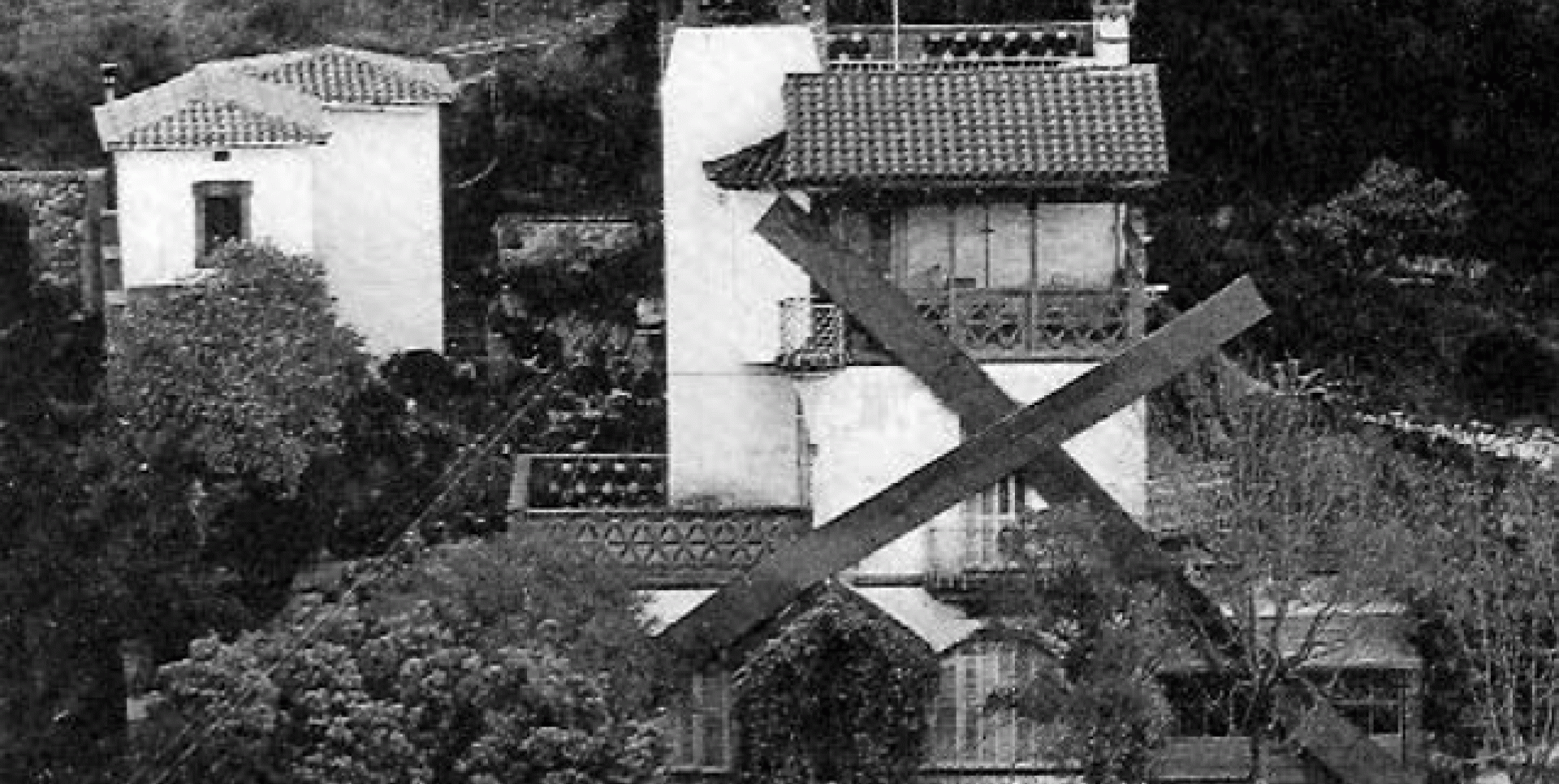The huge wooden cross showcased by Eduard Arranz-Bravo and Rafael Bartolozzi to mark the EINA headquarters at the Manuel Dolcet tower stands out most among the artworks crafted in academic year 1971-1972.
In this ephemeral work, a giant wooden cross painted red covered the building's facade. The cross was built in sections since no scaffolding was available, and was raised by hand (many hands) using ropes and pulleys from the balconies and roofs on the first and second floors. The parts were joined together as they were assembled to form the final result. This vast effort was completed thanks to enthusiastic participation by students who took part in an open workshop taught by the artists themselves.
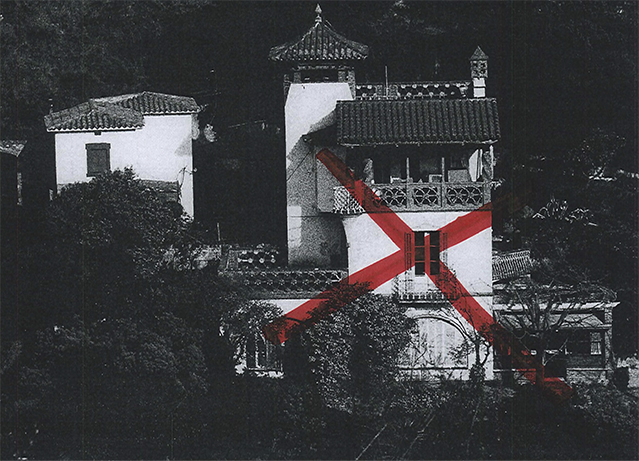
The building's interior was completely dark with the exception of a black and white 18 x 24 cm illuminated photograph of the tower itself with the lines of a handmade cross drawn through using a red marker. The spectacular result meant the cross-covered tower could be seen from the road to Vallvidrera.
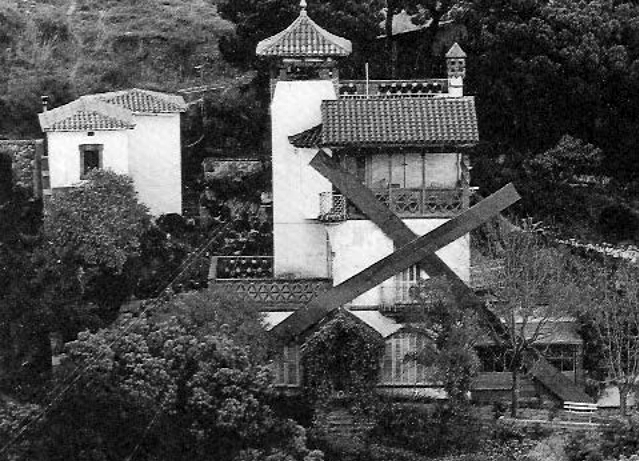
Observers were able to view this conceptual and ephemeral art experience for one hour. Once the photographs were taken, the piece was dismantled and no trace of the work remained. As always in this type of work, the process is what mattered most.
The Arranz-Bravo/Bartolozzi artistic duo known as Els Pintors was active between 1967 and 1982. The artists distanced themselves from the typical abstraction of previous decades and leaned towards new figuration and pop art. In 1968 they were commissioned by the businessman Isidor Prenafeta (a former fine arts students with Arranz-Bravo) to decorate the Tipel company's leather factory in Parets del Vallès. The result was artwork in the form of a mural over two thousand square metres in size on the facade and side walls of the factory, accompanied by six sculptures of sheep in later years. The work, highly regarded at the time and considered one of the most important pop art works in Catalonia, could be seen from the AP7 motorway. This made it so popular that the motorway company lodged a complaint, later dismissed, stating that it could be a distraction for drivers.
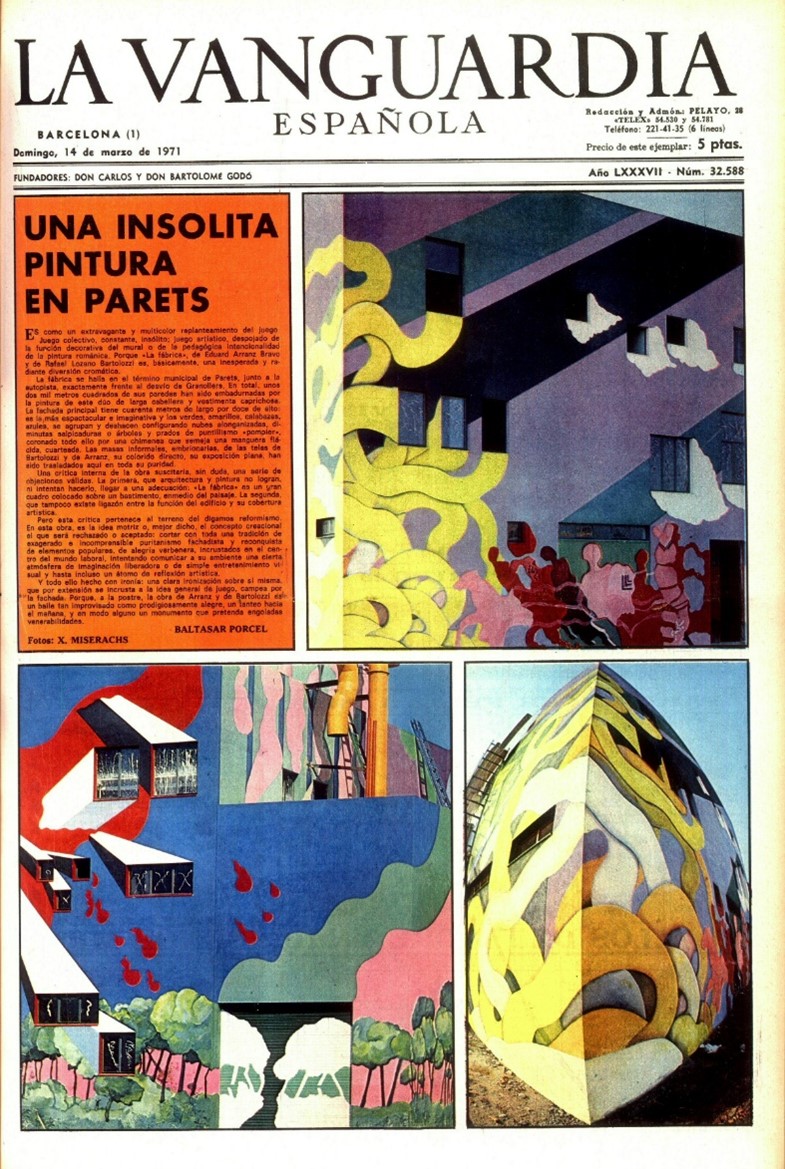
Additional information
- Idea and production: Eduard Arranz-Bravo and Rafael Bartolozzi, with collaboration from students in the 1971 Tallers Oberts workshop.
- Photography: Arranz Bravo Foundation.
- Location: Casa Manuel Dolcet (original EINA headquarters).
Acknowledgements
We would like to thank the Arranz-Bravo Foundation and its director Albert Mercadé for providing us with the image of the artwork.
In memoriam Eduard Arranz-Bravo (1941-2023)
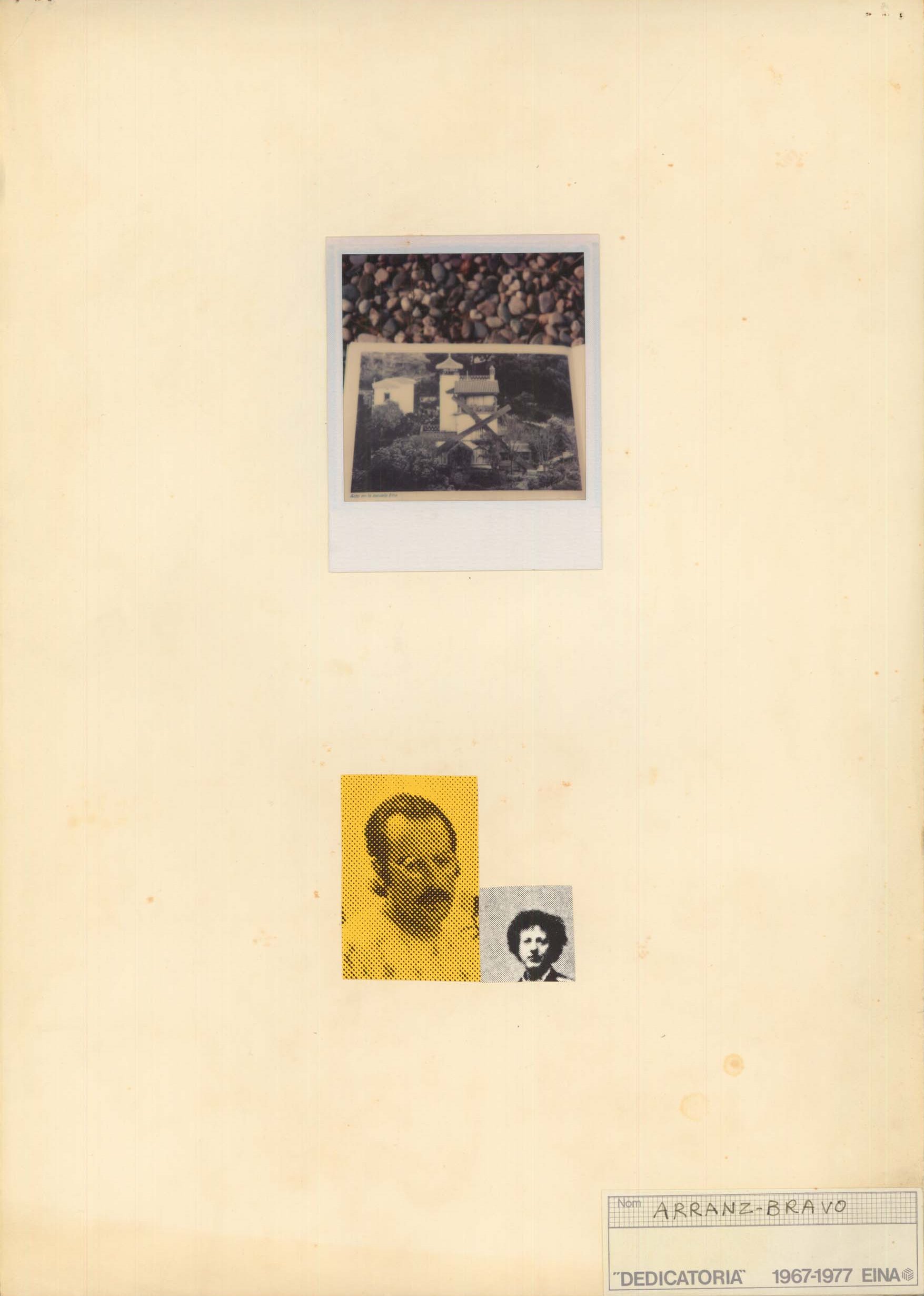 Dedicatoria de Eduard Arranz-Bravo
Dedicatoria de Eduard Arranz-Bravo
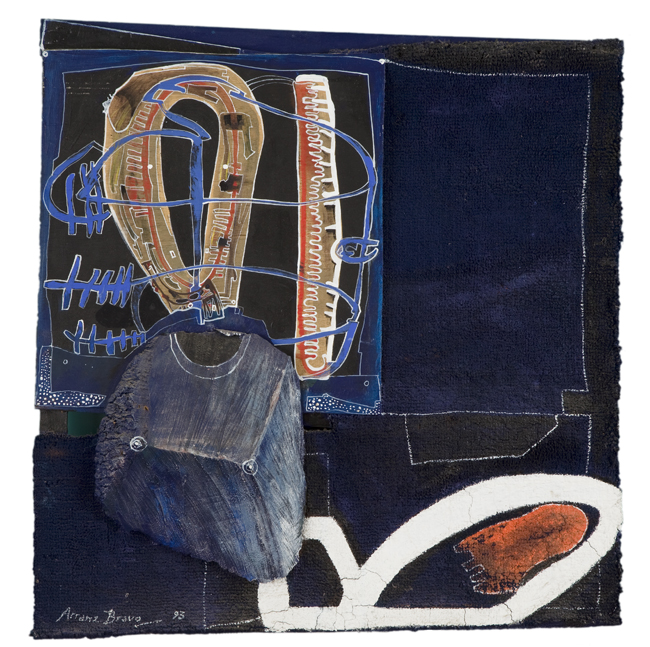 Sin título Eduard Arranz-Bravo
Sin título Eduard Arranz-Bravo
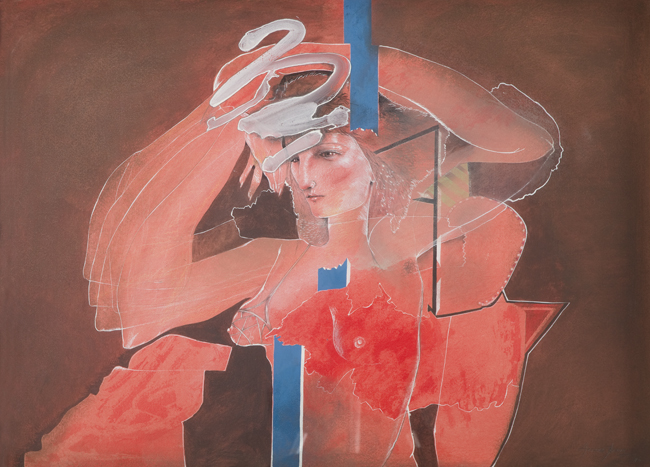 Sin título Eduard Arranz-Bravo
Sin título Eduard Arranz-Bravo
